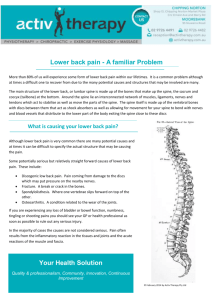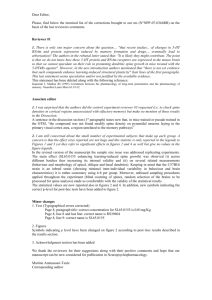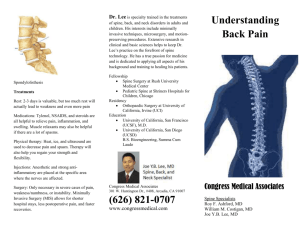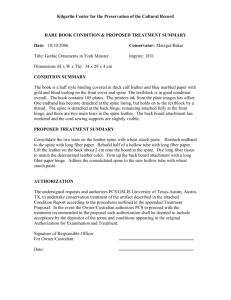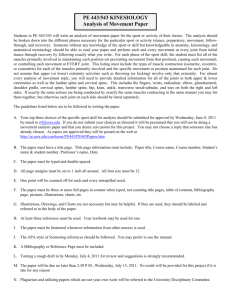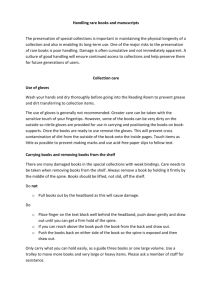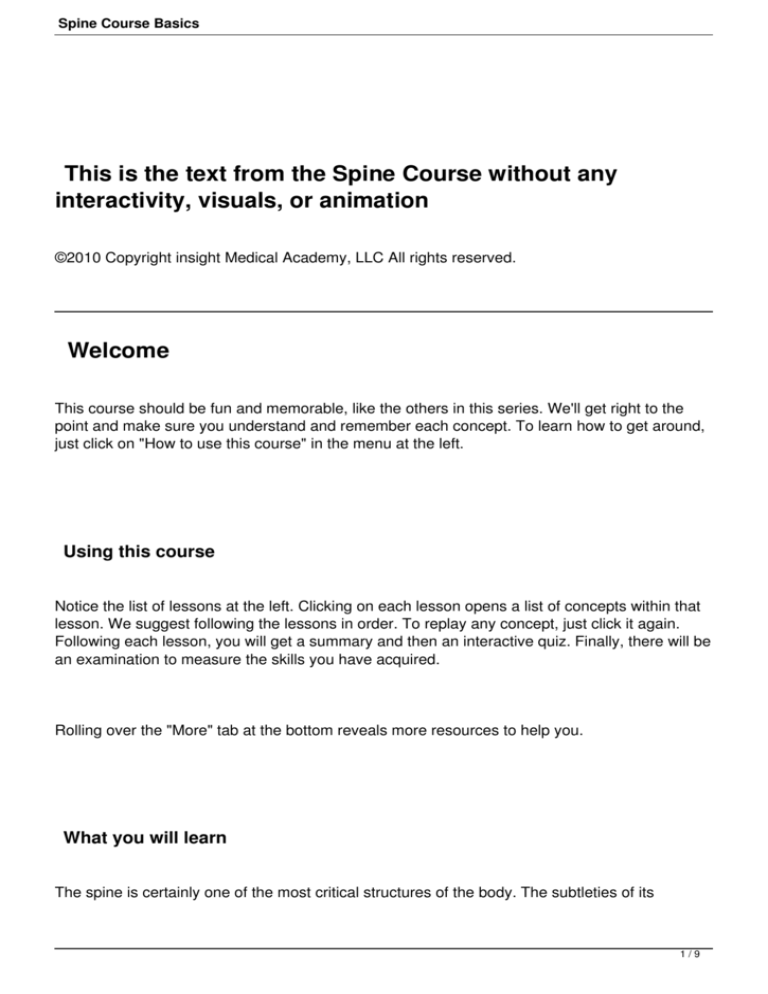
Spine Course Basics
This is the text from the Spine Course without any
interactivity, visuals, or animation
©2010 Copyright insight Medical Academy, LLC All rights reserved.
Welcome
This course should be fun and memorable, like the others in this series. We'll get right to the
point and make sure you understand and remember each concept. To learn how to get around,
just click on "How to use this course" in the menu at the left.
Using this course
Notice the list of lessons at the left. Clicking on each lesson opens a list of concepts within that
lesson. We suggest following the lessons in order. To replay any concept, just click it again.
Following each lesson, you will get a summary and then an interactive quiz. Finally, there will be
an examination to measure the skills you have acquired.
Rolling over the "More" tab at the bottom reveals more resources to help you.
What you will learn
The spine is certainly one of the most critical structures of the body. The subtleties of its
1/9
Spine Course Basics
biomechanics and biological behaviors are under intense investigation. In this course, you will
learn...
Basic anatomy of the spine.
Biomechanics of the spine.
Diseases of the spine.
Common interventions for spinal diseases.
Following each section, you will get a summary and an interactive quiz.
Finally, there will be an examination to quantify the skills you have acquired.
As a bonus, you will learn the basics of common imaging techniques.
2/9
Spine Course Basics
Spine basics
The spine is formally known as the vertebral column. It can be thought of as the armature upon
which the body is built.
In this section, we will learn some fundamental concepts that will make the more detailed
sections to fol low much easier to understand and remember.
Build a spine - part 1
You need to build a strong, yet flexible column. Click and drag an elastomeric doughnut into its
correct location on the spine. Then drag a rigid, load-bearing block. Repeat until complete.
What just happened?
It looks like our spine needs more stabilization. Move on to Part 2 to learn more.
Build a spine - part 2
Please drag the stabilization bands to your spine. The bands are slightly elastic and will help
support the spine, while maintaining flexibility.
The strong, slightly flexible bands provide support while providing limited movement.
These bands are called ligaments, composed mostly of strong, oriented fibers of collagen and
water.
Ligaments are present throughout the body to stabilize joints, but can be torn by excessive
forces.
3/9
Spine Course Basics
Basic spine components
This illustration shows two vertebrae and their intervertebral disk, or simply "disk."
The main cylinder-like portion of the vertebra is called the vertebral body.
The spinous processes are protrusions of bone that extend from the posterior of the spine.
They provide attachment for ligaments and muscles that stabilize and provide motion to the
spine.
They can be palpated (felt) through the skin.
The transverse processes are protrusions of bone that extend laterally from the spine.
They provide attachment for ligaments and muscles that stabilize and provide motion to the
spine.
The intervertebral disks separate the vertebrae. They are vital to the normal functioning of the
spine.
Disks absorb shock.
Disks distribute the load.
4/9
Spine Course Basics
Disks permit flexibility.
The disks are normally at a pressure that exceeds the maximum blood pressure, thus they do
not have a good supply of blood (vascularization).
The vertebral column
This is a speedy overview of the human spine. Take your time on this lesson because it is
loaded with information.
This view shows the location of the vertebral column relative to the female body.
The brain is not part of the spine, but you can see that all the nerves below the head connect
the brain to the body through the vertebral column.
Thus an injury to the vertebral column may damage nerves and result in paralysis.
The transverse processes protrude from the sides of the spine.
They provide anchorage for ligaments and muscles that stabilize and provide motion to the
spine.
The spinous processes are protrusions of bone that extend from the posterior of the spine.
5/9
Spine Course Basics
They provide attachment for ligaments and muscles that stabilize and provide motion to the
spine.
They can be palpated (felt) through the skin.
The sacrum connects to the lowest vertebral disk. It begins as nine separate pieces in a child
and fuses into one bone with growth.
The coccyx (tailbone) is a remnant of a vestigial tail. It is composed of 3-5 fused vertebrae and
serves as an important attachment point for muscles of the pelvic floor.
It is connected to the sacrum by a fibrous joint.
The normal spine has four saggital curvatures. These curves allow greater flexibility and
resistance to shock.
Each curve defines a separate region of the spine. Each region has its own anatomy and
function.
Upright, but at a cost
For 200 million years, vertebrates evolved in a weightless environment. Then for the next 300
million years, the spine evolved in a more or less horizontal orientation.
6/9
Spine Course Basics
The human vertebral column has had only the previous seven million years to adjust to a
creature that routinely subjects it to the full force of gravity.
Biological imperfections become more evident with the extension of average human life span to
over 70 years.
Common problems
Trauma, aging, and congenital abnormalities may result in spinal diseases.
Posterior to anterior X-ray showing severe scoliosis (abnormal curvature) in two regions of the
spine.
Broken neck resulting from trauma
Severely ruptured lumbar disk pressing on the spinal cord.
Collapsed lumbar vertebrae due to bone loss (osteoporosis).
Spinal basics recap
The spine must support the weight of the body, but be flexible.
7/9
Spine Course Basics
The spine has two central types of structures
Vertebrae
Disks
The vertebrae
In the anterior view, the vertebrae are vertically aligned
In the lateral view, the vertebrae have four curvatures
Connect to ligaments and muscles by bone extensions called processes
The intervertebral disks
Absorb shock
Distribute the stresses put on the spine
Permit flexibility
Aging, trauma, and congenital abnormalities may result in conditions that require medical
intervention
8/9
Spine Course Basics
Quiz
9/9


